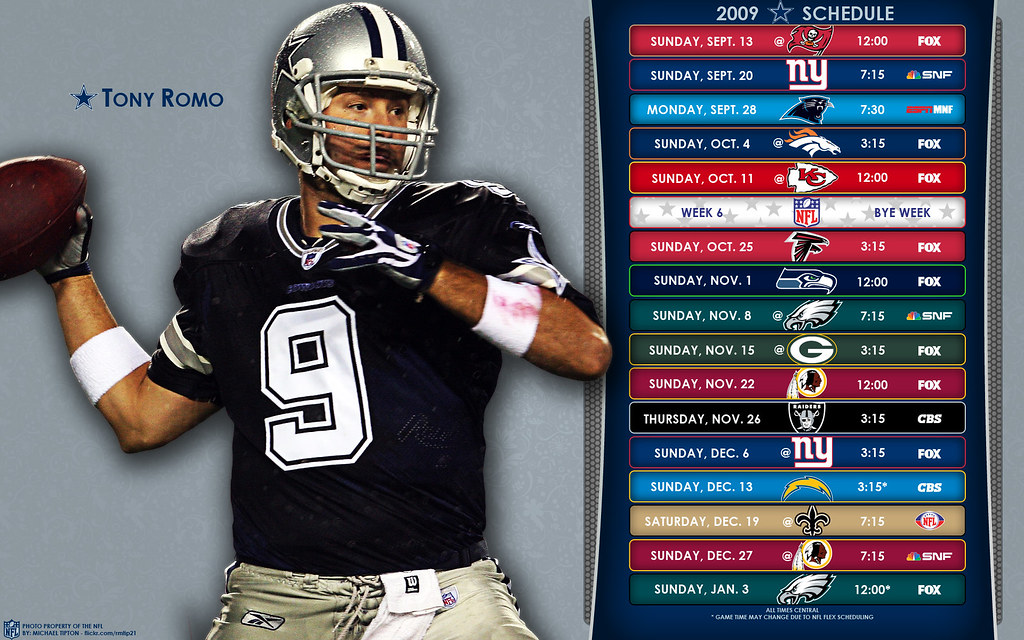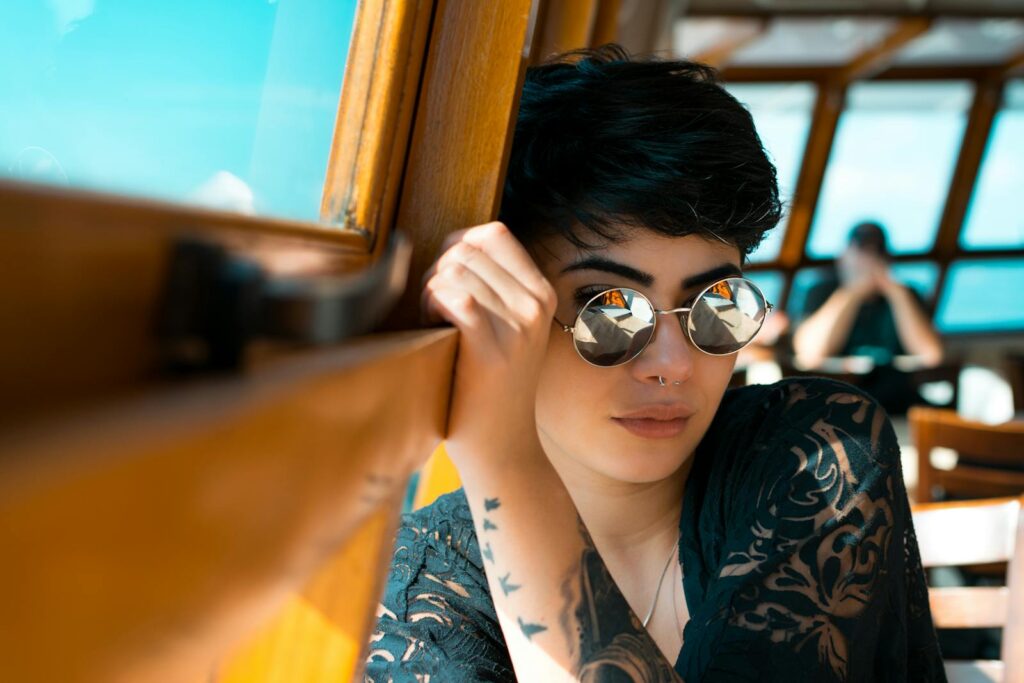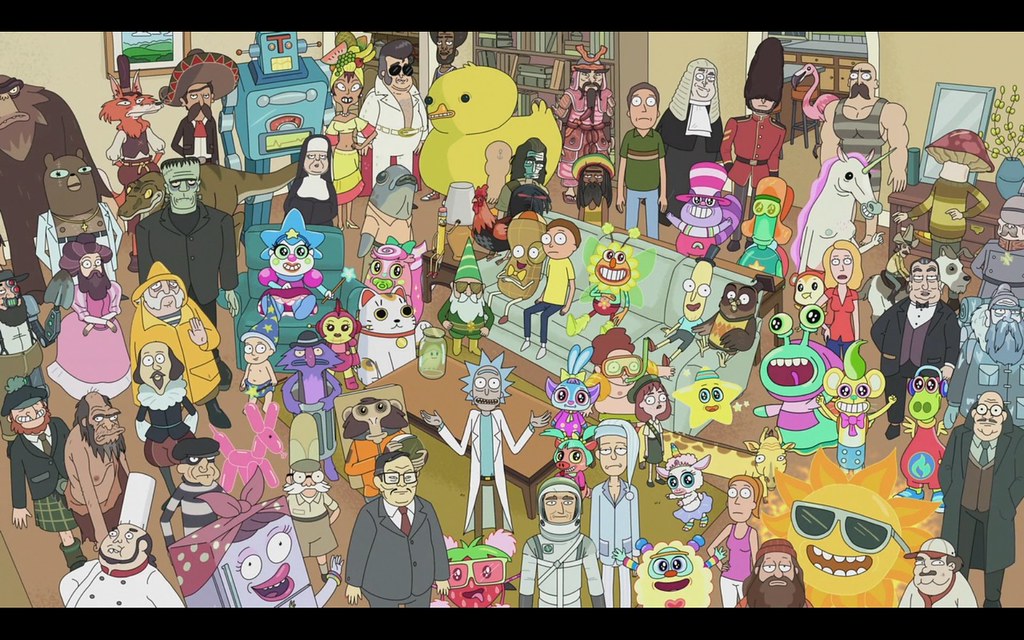
In the vast and often bewildering landscape of modern television, few shows have captured the zeitgeist quite like “Rick and Morty.” What began as a subversive, off-kilter animated short has exploded into a global phenomenon, delighting audiences with its audacious blend of high-concept science fiction, biting humor, and surprisingly profound philosophical musings. It’s a series that dares to ask the big questions while simultaneously delivering laugh-out-loud moments, making it a truly unique entry in the adult animation canon. It has consistently pushed boundaries, both narratively and aesthetically, carving out a distinct space in popular culture that speaks to a generation grappling with existential uncertainty.
The journey of “Rick and Morty” from its humble, almost accidental beginnings to its current status as a cultural touchstone is a fascinating tale filled with creative genius, unexpected challenges, and undeniable triumphs. It’s a story not just about a cynical mad scientist and his good-hearted grandson, but about the passionate minds who brought them to life, the intricate processes behind their interdimensional escapades, and the real-world shifts that have tested the very fabric of its production. Like any beloved star in the spotlight, the show itself has experienced its share of personal highs and lows, evolving under the intense scrutiny of its devoted fanbase and the industry at large.
Today, we’re taking a deep dive behind the scenes, pulling back the curtain on this animated titan to explore the key moments that have shaped its identity. From the spark of an idea born in a short film festival to the critical acclaim and recent shifts in its voice cast, we’ll uncover the intricate details and human stories that make “Rick and Morty” so much more than just a cartoon. Join us as we journey through the creation, core characters, creative processes, pivotal production changes, deep themes, and initial reception that laid the groundwork for this unparalleled series.
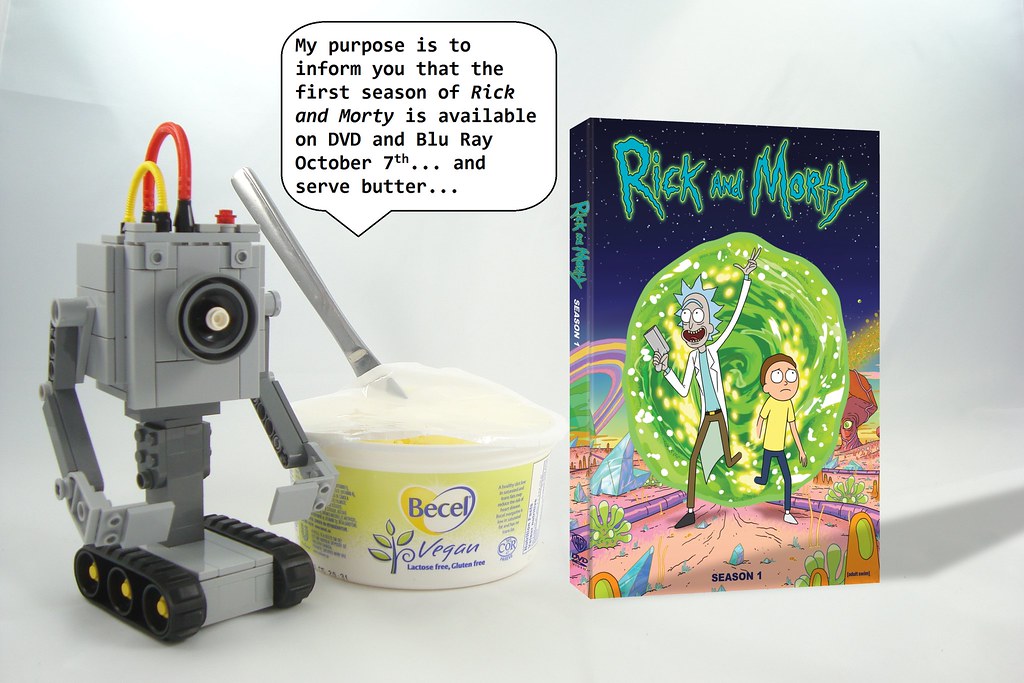
1. **The Genesis of an Adult Swim Phenomenon**
The story of “Rick and Morty” is intrinsically linked to the unconventional meeting of its creators, Justin Roiland and Dan Harmon. Their paths first crossed at Channel 101, a non-profit monthly short film festival in Los Angeles that Harmon co-founded. Roiland, who was then producing reality programming, began submitting content to the festival in 2004, a year after its launch. His submissions were often characterized by their “sick and twisted” elements, designed to shock and provoke, frequently eliciting a confused reaction from the audience.
Despite the unconventional nature of Roiland’s work, Harmon was captivated by his unique sense of humor, leading the two to begin a collaboration that would eventually reshape adult animation. A pivotal moment came in 2006 when Roiland, feeling creatively stifled in a previous television role, channeled his energies into creating a webisode for Channel 101. The result was “The Real Animated Adventures of Doc and Mharti,” a raw and explicit parody of Doc Brown and Marty McFly from the iconic “Back to the Future” film trilogy.
Harmon himself famously dubbed the short “a bastardization, a pornographic vandalization,” an apt description for its outrageous content, where Doc Smith urged Mharti to perform sex to travel back in time. This shock-value approach resonated wildly with the audience, prompting Roiland to create more shorts featuring the characters. These shorts quickly evolved beyond their original intentions and obvious origins, laying the groundwork for something much bigger. Years later, after Harmon was briefly fired from his NBC sitcom “Community” in 2012, Adult Swim approached him, seeking a prime-time “hit” show. Initially viewing the channel as unfit for his style and unfamiliar with animation, Harmon reached out to Roiland, who immediately pitched the idea of adapting his “Doc and Mharti” characters, now renamed Rick and Morty, for the network. Adult Swim development executive Nick Weidenfeld suggested Rick be Morty’s grandfather, a key dynamic that would define the series.
Roiland, having experienced the disappointment of three failed animated pilots for Fox, was initially wary of external notes on his pitch, feeling “burned out” by the development process. However, Harmon felt that building a family around the characters was the best way to expand Roiland’s voices into a half-hour program, as Adult Swim pushed for a longer format than Roiland’s preferred eleven-minute segment. Remarkably, the first draft of the pilot was completed in a mere six hours on the Paramount Pictures lot in Harmon’s unfurnished “Community” office. Harmon recalled Roiland’s foresight: “We were sitting on the floor, cross-legged with laptops and I was about to get up and go home and he said, ‘Wait, if you go home, it might take us three months to write this thing. Stay here right now and we can write it in six hours.’ He just had a premonition about that.” This intense, collaborative sprint solidified the basics of the story, leading to the pilot’s quick sale and setting the stage for the show’s groundbreaking run.
Read more about: The Complex Persona of Marjorie Taylor Greene: Examining Her Political Path and Controversial Public Profile
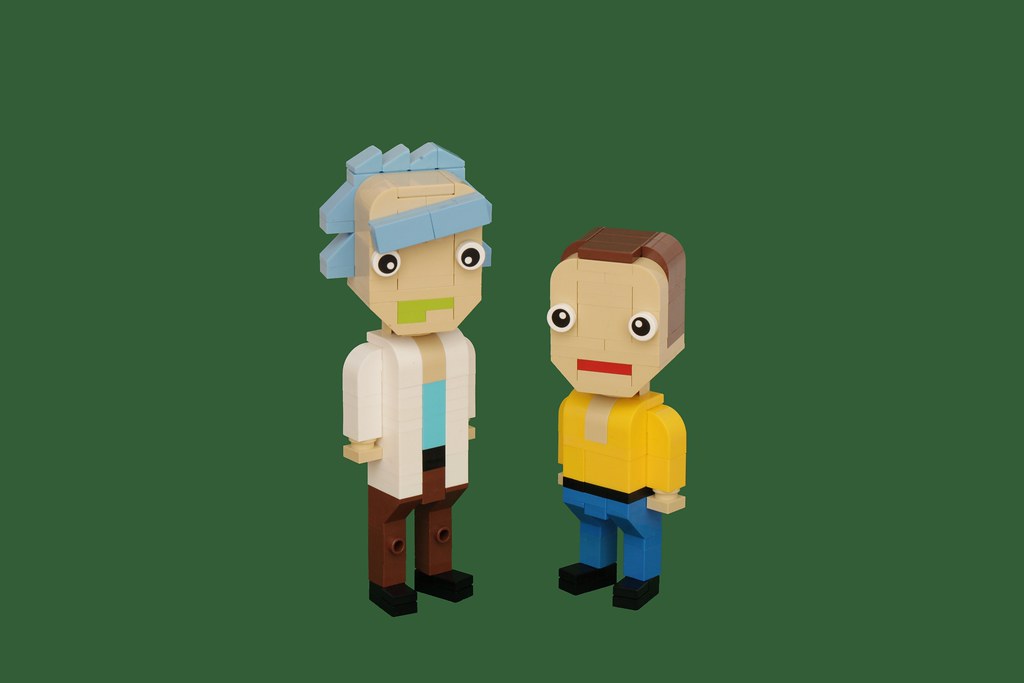
2. **Meet the Chaotic Family: Core Characters and Premise**
At its heart, “Rick and Morty” is a story about a dysfunctional family caught between the mundane and the cosmic, a fascinating juxtaposition that forms the bedrock of its appeal. The series revolves around the Smith household, an ostensibly normal suburban family living outside Seattle, Washington, whose lives are turned upside down by the arrival of Beth’s eccentric, alcoholic, and supremely intelligent father, Rick Sanchez. This core premise allows for an endless array of narrative possibilities, blending relatable domestic squabbles with mind-bending interdimensional adventures.
Rick Sanchez is the undeniable driving force of chaos, an unhinged mad scientist who unapologetically eschews traditional societal conventions such as school, marriage, love, and even family. His adventures, often fueled by cynicism and nihilism, primarily involve his 14-year-old grandson, Morty Smith. Morty serves as the audience’s emotional anchor: a kind-hearted, easily distressed, and somewhat naïve boy whose grounded moral compass frequently clashes with Rick’s Machiavellian ego. Their dynamic is a central pillar of the show, providing both comedic friction and moments of genuine, albeit often dark, emotional resonance.
Rounding out the immediate family are Morty’s 17-year-old sister, Summer, and their parents, Beth and Jerry. Summer is portrayed as a more conventional teenager, preoccupied with improving her status among her peers, but she occasionally joins Rick and Morty on their perilous adventures, proving herself to be surprisingly capable. Their mother, Beth, is a horse surgeon, a generally level-headed and assertive presence within the household, though she grapples with insecurities about her professional role and her often-strained marriage to Jerry. Jerry, in stark contrast, is simple-minded, insecure, and profoundly disapproving of Rick’s disruptive influence over his family, embodying a constant, if often hapless, foil to Rick’s genius.
One of the most captivating aspects of the show’s premise is its exploration of the multiverse, where different versions of these characters inhabit countless dimensions. These alternate realities allow for varied personal characteristics, adding layers of complexity to the established cast. The show’s original Rick identifies himself as “Rick Sanchez of Earth Dimension C-137,” referencing his home universe, a distinction that doesn’t necessarily apply to the other members of the Smith household. This fluidity is famously demonstrated in the first-season episode “Rick Potion #9,” where, after transforming the entire world population into monsters, Rick and Morty simply move to a different dimension, leaving their original Summer, Beth, and Jerry behind. This concept of infinite possibilities not only fuels the show’s boundless creativity but also contributes to its underlying philosophical themes.
Read more about: Hold Up! These 14 Horror Movies Truly Deserve Their Infamous Reputations – And We’ll Tell You Why
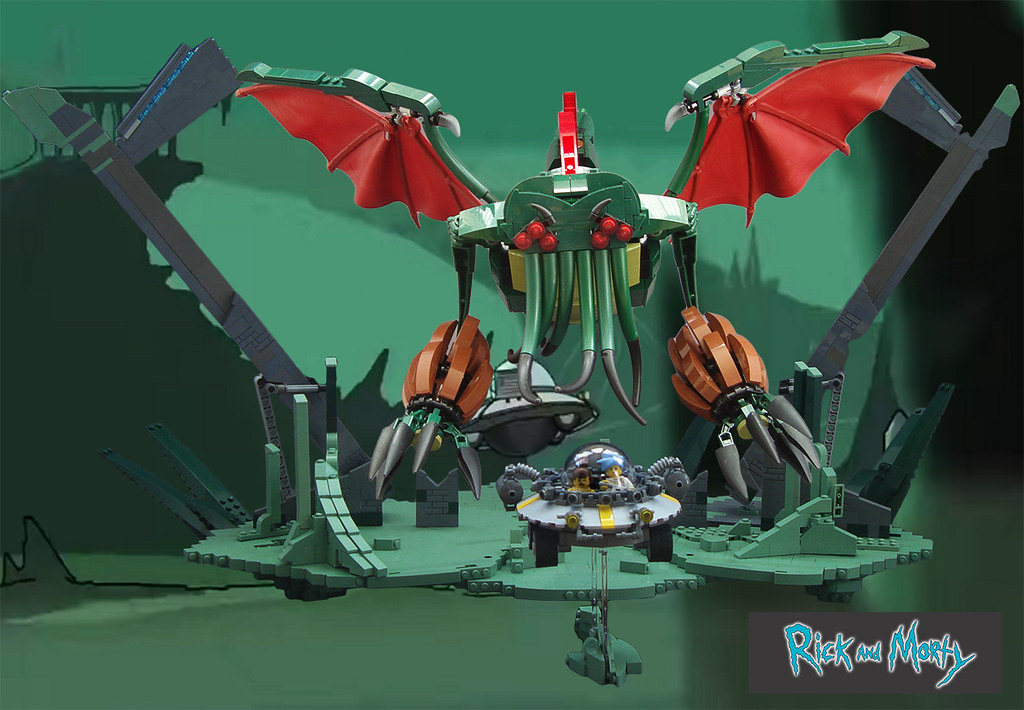
3. **The Masterminds Behind the Madness: Writing Process Revealed**
Behind every mind-bending plot twist and hilariously tragic character moment in “Rick and Morty” lies a meticulously crafted writing process, albeit one tinged with the creators’ distinct personalities. Dan Harmon has often drawn parallels between the show’s writers’ room and the one he utilized for “Community,” noting a key difference: “Rick and Morty” boasted a significantly smaller staff, described as a “very, very tiny little writers’ room with a lot of heavy lifting from everybody.” This intimate setting fostered a more “rough and tumble verbally” environment, allowing ideas to be dissected and refined with intense scrutiny.
The writing staff, which for the first season included Roiland, Harmon, Tom Kauffman, Ryan Ridley, Wade Randolph, and Eric Acosta, along with writer’s assistant Mike McMahan, began their work by brainstorming ideas, which would then organically evolve into a cohesive story. These discussions were far from dry academic exercises; they often incorporated personal anecdotes from the writers’ own lives, alongside deep dives into the nuances and tropes of the science fiction genre. This blend of personal experience and genre savvy contributes to the show’s unique voice, allowing it to deconstruct classic sci-fi concepts while rooting its characters in relatable human (or alien) struggles.
Once a story idea was thoroughly discussed and broken—a process that involved developing its internal consistency and establishing a logical beginning, middle, and conclusion—a writer was assigned to create an outline. Following this, both Roiland and Harmon would do a “pass” on the outline, meticulously refining it before the episode underwent several more drafts. The final draft of each script ultimately required the approval of one of the co-creators, ensuring a unified vision. However, this pursuit of perfection was not without its challenges. Harmon has openly admitted that his perfectionism could sometimes disrupt the writing schedule, notably leading to the third season consisting of only 10 episodes instead of the initially intended 14.
Many “Rick and Morty” episodes are structured using Harmon’s proprietary “story circle,” a narrative framework based largely on Joseph Campbell’s concept of the monomyth, or The Hero’s Journey. This method helps to ensure a coherent, if unconventional, narrative arc within each episode, placing the act break at a unique point in the monomyth’s stages. Despite this structural rigor, Roiland has emphasized that he and Harmon intentionally aim for the series to lack traditional continuity, embracing discontinuous storylines that are “not bound by rules.” This freedom allows for audacious narrative choices, where consequences in one episode might be entirely reset in the next, reinforcing the show’s chaotic multiverse. Furthermore, the writers actively avoid revisiting old tropes or engaging in what Roiland calls “disingenuous fan service,” constantly striving for fresh and unexpected storytelling to keep the audience on their toes.
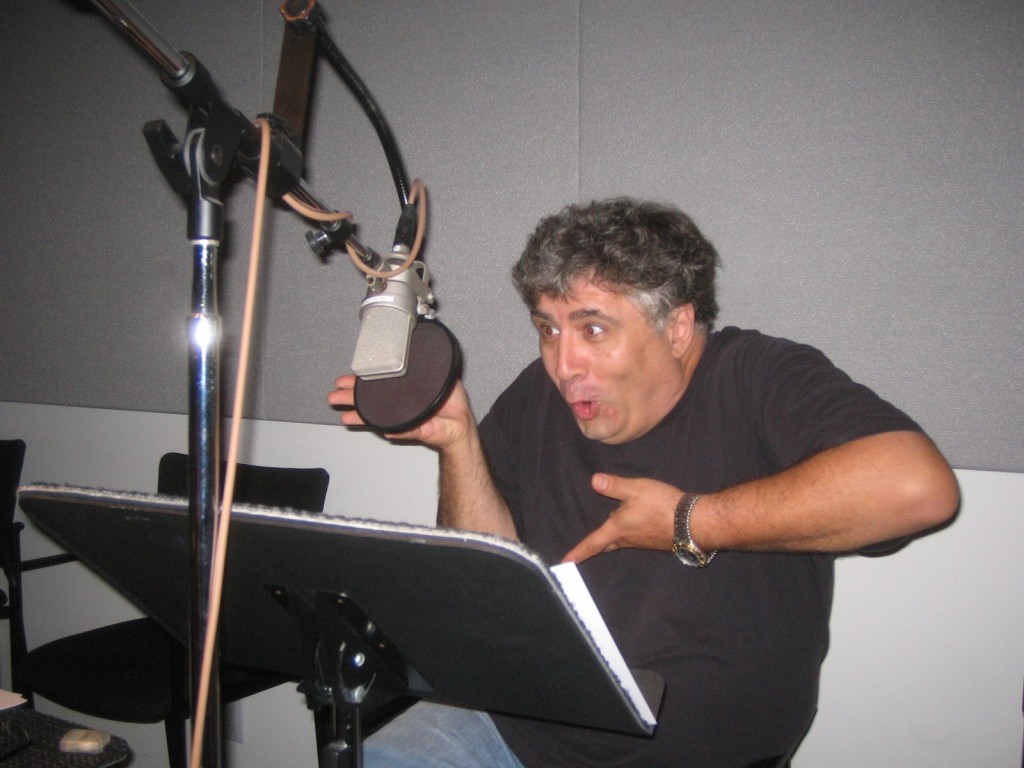
4. **Bringing Worlds to Life: Animation and Voice Acting Secrets**
The visually distinctive and ever-evolving worlds of “Rick and Morty” are brought to life through a sophisticated blend of modern animation techniques and a meticulous artistic approach. The core animation is expertly rendered using Toon Boom Harmony, a vector-based 2D puppet software. This choice provides a more economical and efficient option compared to traditional hand-drawn animation, allowing for the rapid production demands of a critically acclaimed series. Following the animation phase, post-production work, including visual effects and compositing, is skillfully handled in Adobe After Effects, adding the polish and dynamic flourishes that make the show so visually engaging. The rich and detailed background art, which often sets the tone for each new dimension or alien planet, is created using Adobe Photoshop, showcasing the artists’ ability to craft diverse and imaginative environments.
Production of the animation itself has been a collaborative effort across continents. For the first six seasons, and returning for the eighth season, Bardel Entertainment in Vancouver, Canada, has been a key partner in translating the scripts into stunning visuals. Since the seventh season, Lighthouse Studios in Kilkenny, Ireland, has also taken on a significant role, ensuring a consistent and high-quality animation output across the show’s growing seasons. This global collaboration underscores the intricate logistical effort required to produce such a visually complex series, highlighting the dedication of numerous artists and technicians working in concert.
Creator Justin Roiland’s unique cartooning style, which gives “Rick and Morty” much of its visual identity, is deeply rooted in influences from animation history. He readily acknowledged his debt to “The Simpsons” in a 2013 interview, noting similarities in mouth and teeth designs, and also drew comparisons to the styles of Pendleton Ward (“Adventure Time”) and J. G. Quintel (“Regular Show”). Roiland explained, “You’ll notice mouths are kind of similar and teeth are similar, but I think that’s also a stylistic thing that … all of us are kind of the same age, and we’re all inspired by The Simpsons and all these other shows we’re kind of subconsciously tapping into.” Beyond these contemporary influences, John Kricfalusi’s “The Ren & Stimpy Show” also served as a strong inspiration, particularly for the small “w-shaped mouths” that characters occasionally make, a direct homage to Ren’s frequent expressions.
Jeffrey Thompson, the season three art director, provided insight into the specific style guide animators follow, explaining that characters are often deliberately drawn with odd or asymmetrical features. This design choice is critical in preventing them from looking “too normal to live in the Rick and Morty universe,” reinforcing the show’s commitment to the bizarre and the unexpected. This attention to detail ensures that even the most fleeting background character fits seamlessly into the show’s anarchic aesthetic. Moreover, a significant part of the characters’ natural and spontaneous feel comes from Roiland’s approach to voice recording. He is known for incorporating a considerable amount of improvisation during sessions, allowing for genuine reactions and unexpected comedic beats that bring an unparalleled authenticity to the dialogue. This improvisational energy, combined with the distinct visual style, makes “Rick and Morty” a truly immersive and unforgettable animated experience.
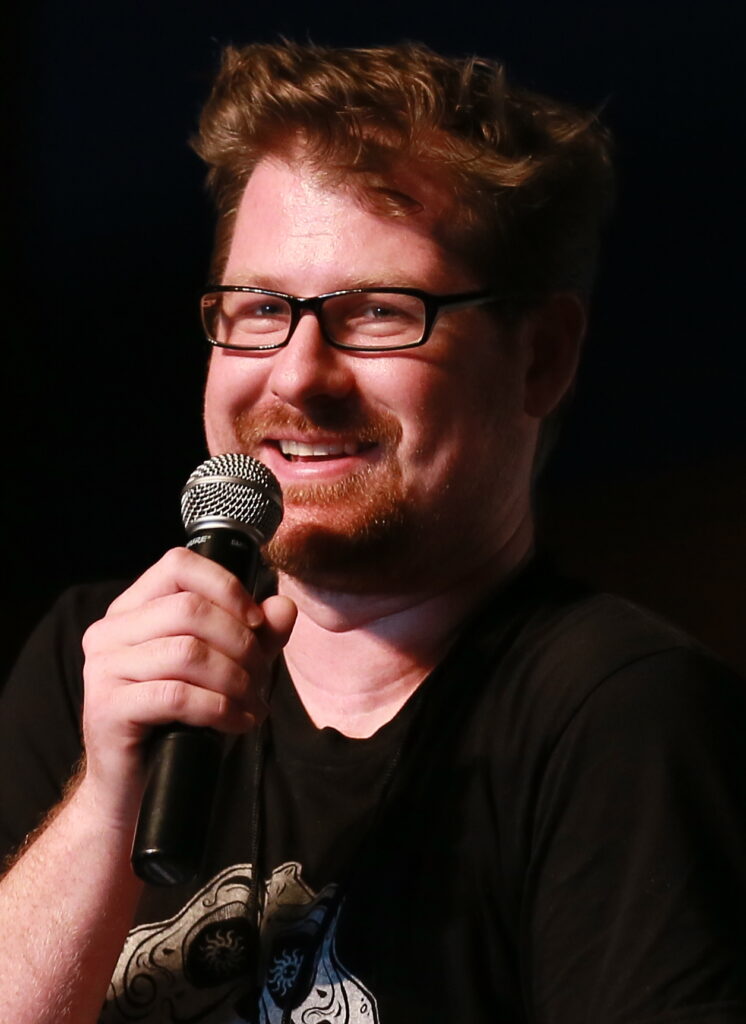
5. **A Sudden Shift: Justin Roiland’s Departure and Recasting**
In a development that sent shockwaves through the “Rick and Morty” fanbase and the animation industry alike, January 2023 brought reports of serious legal challenges facing co-creator and lead voice actor, Justin Roiland. He was charged with felony domestic battery and false imprisonment in Orange County, California, stemming from an alleged incident in January 2020 involving an unnamed woman he was reportedly dating at the time. A hearing for these charges was initially scheduled for April 27, 2023, initiating a period of intense public scrutiny for Roiland.
Following the public revelation of the indictment, additional allegations surfaced concerning Roiland’s personal conduct, particularly regarding his behavior toward minors on social media. The cumulative weight of these reports prompted a decisive response from Adult Swim. The same month, the network announced its decision to cut ties with Roiland, effectively firing him from the show he co-created. In their statement, Adult Swim affirmed that production for the highly anticipated seventh season would continue as planned, but that Roiland’s pivotal voice roles—Rick Sanchez and Morty Smith, among others—would be recast.
The situation took another turn in March 2023, when the Orange County District Attorney’s office officially dropped all criminal charges against Roiland. The reason cited was insufficient evidence, a development that, while clearing his legal standing, did not reverse Adult Swim’s prior decision to part ways. The show’s production team was faced with the unique challenge of maintaining the beloved characters’ essence while introducing new vocal performances.
At San Diego Comic-Con 2023, producer Steve Levy offered reassurance to fans, stating that Roiland’s voice work would be replaced by “soundalikes,” emphasizing that there would be no other changes to the characters themselves. The reveal of the new voices became a highly anticipated moment, with Adult Swim unveiling them in the seventh season trailer in September 2023. The new actors’ identities were kept under wraps until the season’s premiere in October 2023, building considerable suspense among viewers. It was then revealed that Ian Cardoni had taken over the iconic role of Rick, and Harry Belden stepped into the shoes of Morty, marking a significant, yet carefully managed, transition in the show’s production history.
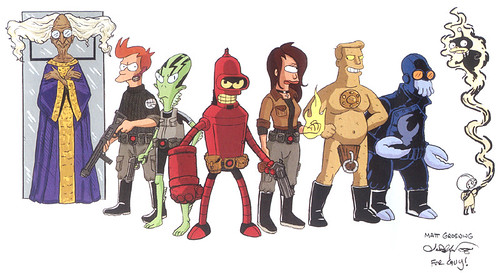
6. **Beyond the Laughter: Unpacking the Show’s Deep Philosophical Themes**
“Rick and Morty” is far more than just a collection of zany adventures; it’s a profound exploration of philosophical concepts often hidden beneath layers of dark humor and chaotic spectacle. Co-creator Dan Harmon has eloquently described the series as a unique cross between Matt Groening’s “The Simpsons” and “Futurama,” successfully balancing the familiar dynamics of domestic family life with the mind-bending complexities of heavy science fiction. This blend creates a rich tapestry where existential dread and cosmic horror are served alongside absurd comedic situations, often leaving viewers with much to ponder long after the laughter subsides.
The show’s comedic style is deeply rooted in the juxtaposition of extremes: an extremely selfish, alcoholic grandfather dragging his impressionable grandson through interdimensional escapades, all while intercut with the often-petty drama of their home life. Harmon openly credits various British television series, such as “The Hitchhiker’s Guide to the Galaxy” and “Doctor Who,” as key inspirations for much of the series’ concept and humor. He notes that the audience often understands developments from Morty’s perspective, stating, “we don’t want to be the companions. We want to hang out with the Doctor, we idolize the Doctor, but we don’t think like him, and that’s really interesting.” This perspective allows the show to deconstruct complex ideas through a relatable, if often terrified, human lens.
“Rick and Morty” also famously plays with the fourth wall, with characters occasionally acknowledging the narrative or hinting at the presence of a television audience. Troy Patterson of The New Yorker observed that the series “supplies an artful answer to the question of what follows postmodernism: a decadent regurgitation of all its tropes, all at once, leavened by some humanistic wistfulness.” Sean Sebastian of Junkee further highlighted the show’s dual nature, remarking that it can be both hilarious and deeply disturbing simultaneously, excelling at the “intersection between big ideas, flippancy and wit.” This ability to toggle between profound insight and irreverent humor is a hallmark of its unique appeal.
A central theme running through the series is the insignificance of human existence in the face of an unimaginably vast universe, echoing Lovecraft’s philosophy of cosmicism, often without a recognizable divine presence. Genovesi (Bonn University) describes the series as exhibiting a nihilistic worldview. The characters frequently grapple with cosmic horror and existential dread, choosing either to assert the utility of science over magic or to embrace a life of ignorant bliss. However, as Joachim Heijndermans of Geeks points out, none of them seem truly capable of handling the absurd and chaotic nature of the universe; Jerry navigates it through denial, while Rick is portrayed as a “depressed, substance-addicted, suicidal mess.” Harmon himself describes Rick as a self-interested anarchist, believing that the character’s vast knowledge and life on a larger scale have led to his mental illness, concluding that “the knowledge that nothing matters—while accurate—gets you nowhere.”
Mental illness is a recurring and openly addressed theme, notably in a scene where Rick’s therapist delivers a scathing explanation of his fundamental immaturity. Matthew Bulger of The Humanist suggests that the creators are trying to convey a crucial message: to find purpose and live a better life, we must focus on human relationships rather than obsessing over unanswerable cosmic questions. Eric Armstrong of The New Republic sees Morty as a representation of the audience, who is “mostly there to react to Rick’s deranged schemes.” Morty’s journey sees him transformed by the harsh truths discovered during his interdimensional adventures, and instead of succumbing to depression, he accepts these realities, empowering him to value his own life. This blend of dark comedy and profound introspection makes “Rick and Morty” a truly thought-provoking experience.
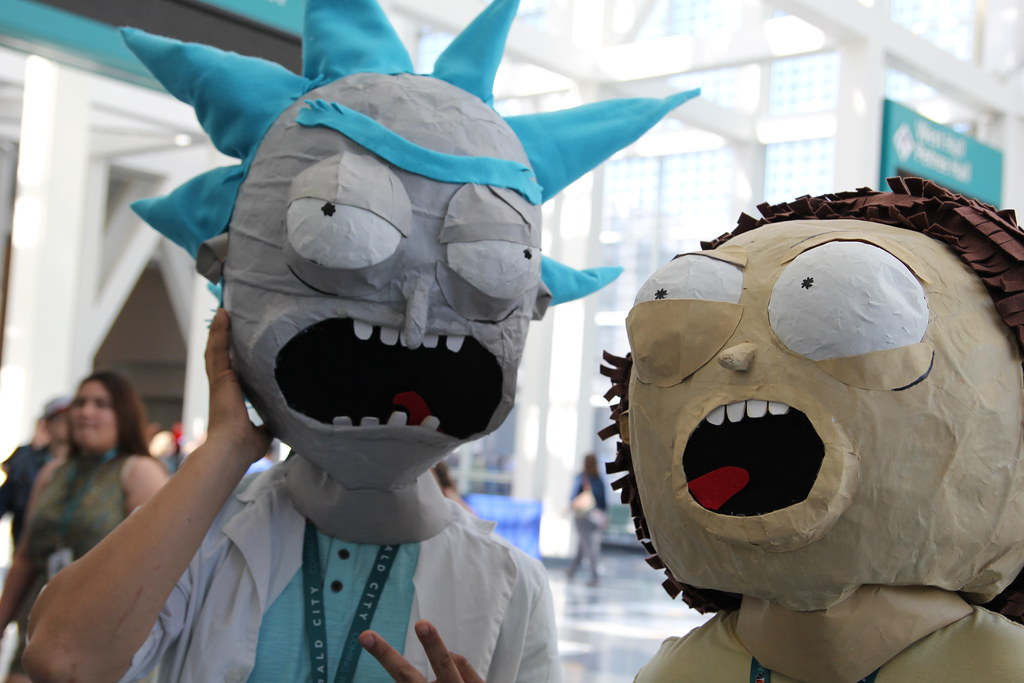
7. **A Symphony of Praise: Initial Critical Acclaim and Recognition**
From its very debut, “Rick and Morty” was met with widespread critical acclaim, quickly establishing itself as a standout in the animated television landscape. The series consistently garnered high praise for its originality, sharp writing, inventive creativity, and distinctive humor, winning over critics and audiences alike. This early positive reception laid a strong foundation for its enduring popularity and cemented its reputation as a groundbreaking show. The consensus among reviewers highlighted its unique ability to blend high-concept science fiction with deeply personal character development.
Review aggregator Rotten Tomatoes reflects this universal praise, with the entire series holding an impressive average approval rating of 90%. David Weigand of the San Francisco Chronicle enthusiastically described the show as “offbeat and occasionally coarse… the take-away here is that it works.” He particularly lauded the animation direction by James McDermott for being “fresh, colorful and as wacky as the script.” Weigand also noted that while the series possessed “shades of Futurama, South Park and even Beetlejuice,” its humor ultimately felt “entirely original,” a testament to its distinct voice and creative vision.
Neil Genzlinger of The New York Times also offered a glowing review, famously praising the series as “Grandparenting at its unhinged finest,” capturing the chaotic yet compelling dynamic between Rick and Morty. Following the second-season premiere, Sean Sebastian of Junkee echoed this sentiment, suggesting that despite its crude animation and occasionally over-the-top voice acting, which might initially deter some viewers, “Rick and Morty” is “exceptionally well-made.” He elaborated that “the more you dissect it, the more you find it has to say,” pointing to the show’s intricate layers and thoughtful subtext.
While most reviews were effusive, Todd Spangler of Variety offered a slightly more nuanced, “lukewarm review,” suggesting that the series “often seems … frenetic at the expense of being witty.” Nevertheless, he still acknowledged it as “a welcome attempt to dream just a little bigger,” recognizing its ambitious scope. David Sims of The A.V. Club bestowed an “A−” rating upon the series after reviewing its first two episodes. He commended its “clean, simple style” of animation and its “dark, sick sensibility,” while also praising its “effort to give each character a little bit of depth” and applauding Justin Roiland’s versatile voice talent. This widespread positive initial reception, despite minor critiques, firmly established “Rick and Morty” as a critical darling, paving the way for its numerous industry awards and continued success.
The incredible journey of “Rick and Morty” doesn’t end with its creative origins or critical reception; its impact has reverberated through television ratings, industry careers, and indeed, across the globe. As we continue our deep dive into this animated marvel, we’ll explore the undeniable triumph it has achieved in the competitive landscape of adult animation, proving that its unique blend of wit, wisdom, and wild adventure truly resonates with a diverse and ever-growing audience. The story of this show is a testament to perseverance, creative vision, and the power of a deeply imaginative universe. It’s a tale that underscores how a seemingly niche program can evolve into a cultural powerhouse, shaping not just entertainment, but the very careers of those who bring it to life.
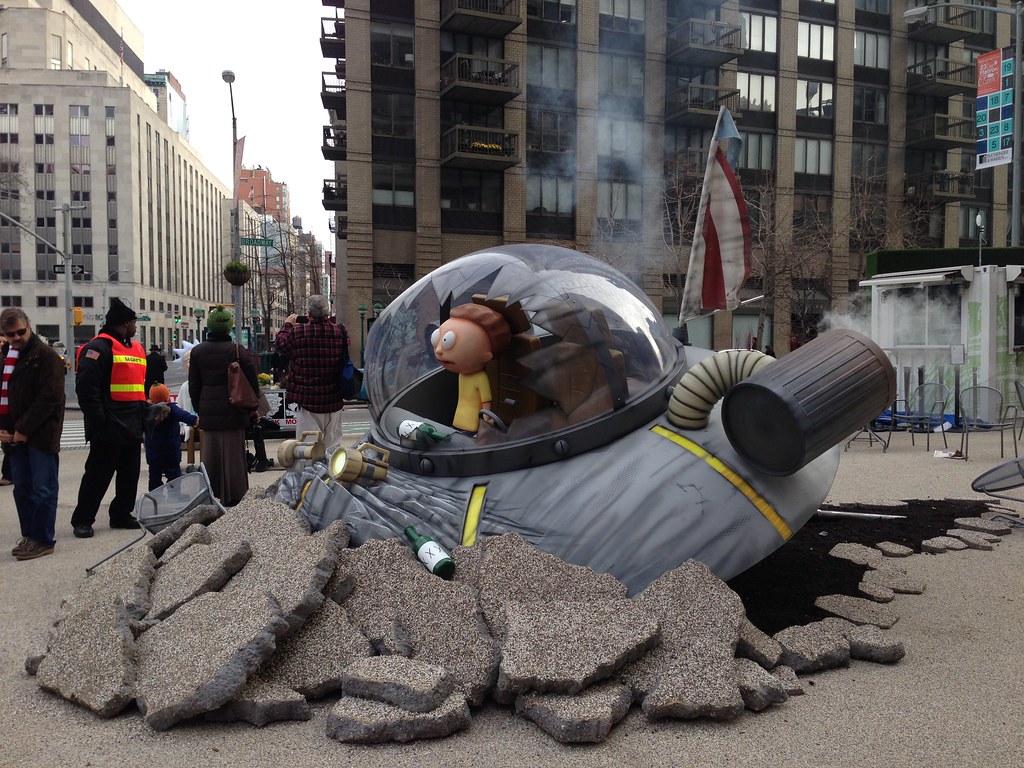
8. **Numbers Don’t Lie: Rick and Morty’s Ratings Triumph**
From its earliest days, “Rick and Morty” was destined for greatness, proving its commercial viability almost immediately. The series quickly became a bona fide ratings hit, captivating audiences from its very first season. Viewership for the show experienced a remarkable surge, often doubling and even tripling over its initial six episodes. This early success was a clear indicator that Adult Swim had a genuine phenomenon on its hands, one that connected with viewers on a profound level.
The show’s popularity soared to unprecedented heights, with its third season marking a significant milestone in Adult Swim’s history. It concluded with the best ratings the network had ever seen, boasting an astounding 81 percent increase in overall viewers compared to the second season. This incredible leap solidified “Rick and Morty’s” status as a ratings juggernaut, confirming its growing influence in the television landscape. A Nielsen poll from that period further highlighted its dominance, revealing that the third season was the most-watched television comedy among adults aged 18 to 24.
The appeal of “Rick and Morty” was not confined to a single demographic, as evidenced by a statement from the president of Adult Swim. He insightfully observed that the show “goes beyond just appealing to millennials.” Statistical data supported this claim, indicating that viewers of all ages were tuning in, drawn by its compelling narratives and unique humor. This broad appeal underscored the show’s universal themes and its ability to transcend generational boundaries, making it a true cross-generational hit.
While the show consistently delivered impressive numbers, its journey wasn’t without its minor fluctuations. The fourth season, for example, kicked off with a strong start, its premiere attracting 2.33 million viewers, close to its average of 2.51 million. However, the network’s decision to split the season into two halves seemed to impact sustained viewership, leading to a noticeable drop in the second half, with about a 40% decrease from the third season’s peak.
Despite this, “Rick and Morty” demonstrated remarkable resilience and consistent viewership, even when pitted against formidable competition like “The Walking Dead” in the same time slot. For instance, the fourth episode of the fourth season still drew 1.62 million viewers, a solid number that showcased its loyal fanbase. Subsequent seasons continued to draw significant attention; the season five premiere garnered 1.7 million YouTube views within 12 hours and 1.9 million television views, while the season six premiere achieved the highest ratings in telecast for women aged 18 to 24 and 18 to 34, and non-sports telecast for male viewers in the same age brackets, solidifying its place as a top-tier non-sports program for viewers 18 to 49.

9. **Hollywood’s Next Generation: The Show’s Far-Reaching Industry Impact**
Beyond its impressive ratings, “Rick and Morty” has played a pivotal role as a launching pad for a new generation of creative talent in Hollywood. Many of the show’s former storyboard artists and crew members have parlayed their experience into developing their own successful series or taking on major roles in high-profile productions. This ripple effect underscores the show’s significance not just as entertainment, but as an incubator for future industry leaders. The show’s distinctive creative environment clearly fostered a unique brand of storytelling that continues to influence the wider media landscape.
Creator Justin Roiland, alongside showrunner Mike McMahan, notably went on to co-create “Solar Opposites.” This animated sci-fi sitcom has frequently drawn comparisons to “Rick and Morty” due to its similar comedic sensibilities and high-concept premise. McMahan’s creative output didn’t stop there; he also helmed “Star Trek: Lower Decks,” demonstrating the versatility and demand for the innovative storytelling approaches honed during his time on the Adult Swim hit. These successes highlight the fertile ground that “Rick and Morty” provided for these talented individuals to grow.
The show’s influence extends far beyond animation, touching major franchises in live-action film and television. Writer Michael Waldron, a “Rick and Morty” alumnus, became a key creative force behind Disney+ series “Loki,” as well as blockbuster films like “Doctor Strange in the Multiverse of Madness,” and the upcoming “Avengers: Doomsday” and “Avengers: Secret Wars.” Waldron himself has openly acknowledged this career trajectory, stating that he and his colleagues are “cashing in on our ‘Rick and Morty’ street cred,” a testament to the show’s respected standing in the industry.
This trend of “Rick and Morty” alums making significant waves continues with Jeff Loveness, who went on to write for “Ant-Man and the Wasp: Quantumania.” Similarly, Erica Hayes, who served as a storyboard writer and director for the show, brought her talents to Netflix’s acclaimed animated series “Big Mouth.” Even “Gravity Falls” creator Alex Hirsch, who contributed to the memorable episode “Big Trouble in Little Sanchez,” became an executive producer for “Inside Job,” another animated series often compared to “Rick and Morty” for its thematic similarities. Pete Michels, a director of over twenty “Rick and Morty” episodes, also directed two episodes of “Inside Job,” further cementing the show’s widespread impact on the careers of those involved.

10. **A Showcase of Excellence: Major Awards and Nominations**
The critical acclaim that greeted “Rick and Morty” from its debut was no fleeting fancy; it quickly translated into a stunning array of prestigious awards and nominations, cementing its status as a creative powerhouse. The series has not only captivated audiences but has also consistently impressed industry panels, earning well-deserved recognition for its groundbreaking contributions to animated television. Its shelf is adorned with accolades that speak to its unique blend of innovative writing, imaginative storytelling, and distinctive humor.
Among its numerous honors, “Rick and Morty” has been nominated for three Primetime Emmy Awards for Outstanding Animated Program, taking home the coveted prize in both 2018 and 2020. The series also boasts two Annie Awards, further highlighting its excellence in animation. These major wins are complemented by a host of other nominations, including a nod for Best TV Animated Series at the IGN Awards in 2014, where it was already making waves.
The show’s trophy cabinet truly began to fill in subsequent years. In 2015, it won Best Animated Series at the IGN Awards, after being nominated for Best General Audience Animated TV/Broadcast Production at the Annie Awards. This momentum continued into 2017, where it secured a victory for Best Animated Series at the IGN Awards, with Justin Roiland also winning Best Comedic TV Performance. The episode “The Ricklantis Mixup” received a nomination for Best TV Episode that year, showcasing the strength of individual installments.
The year 2018 was particularly triumphant, with “Rick and Morty” winning the Critics’ Choice Television Award for Best Animated Series. Its iconic episode “Pickle Rick” earned the Annie Award for Best General Audience Animated Television/Broadcast Production, and Ryan Ridley and Dan Guterman won an Annie for Outstanding Achievement for Writing in an Animated Television/Broadcast Production for “The Ricklantis Mixup.” “Pickle Rick” also saw nominations for the Golden Reel Awards for Outstanding Achievement in Sound Editing and, most notably, clinched the Primetime Emmy Award for Outstanding Animated Program, marking a significant milestone in its journey. The series continued its streak with another Primetime Emmy for Outstanding Animated Program in 2020 for “The Vat of Acid Episode.” In more recent years, it has garnered nominations from the Critics’ Choice Super Awards, American Cinema Editors Awards, Saturn Awards, Hollywood Critics Association TV Awards, Artios Awards, and Astra Creative Arts TV Awards, including a nomination for Outstanding Achievement in Casting at the 2025 Artios Awards.
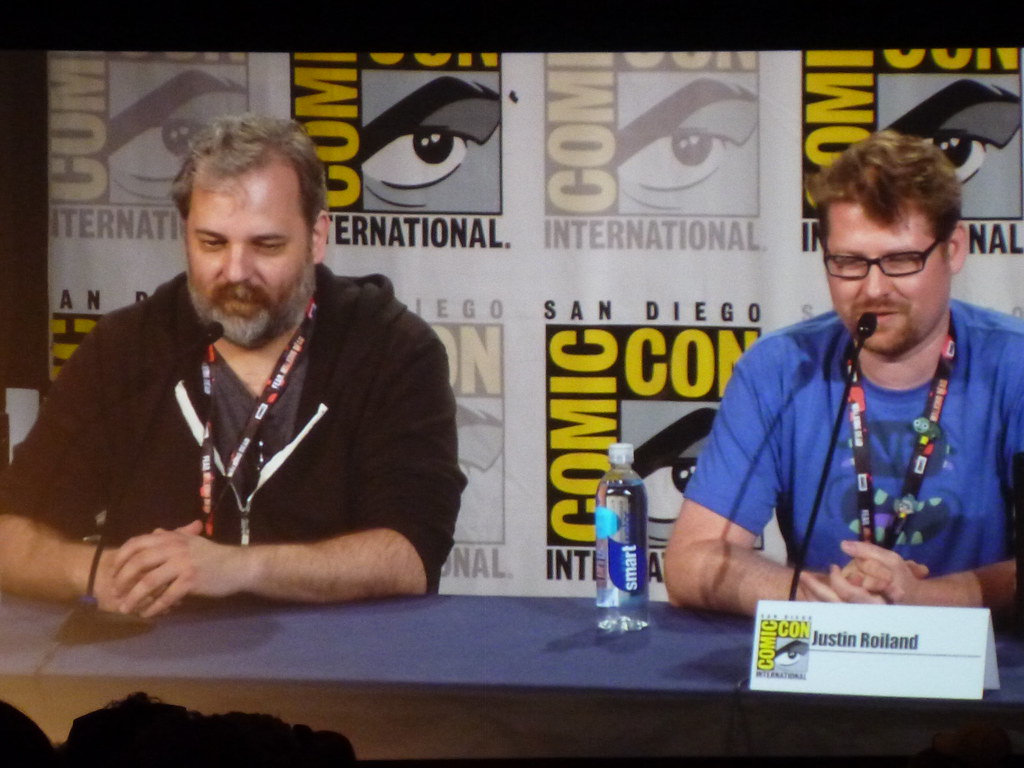
11. **The Unfolding Saga: Securing the Future and Sustaining the Momentum**
As “Rick and Morty” evolved into a beloved cultural touchstone, its creators, Dan Harmon and Justin Roiland, recognized the need for long-term stability to fully realize their vision. Following the conclusion of the show’s third season, they sought assurances from Adult Swim for a sustained future. Their goal was clear: to minimize their involvement in other projects and dedicate their creative energies wholeheartedly to “Rick and Morty,” ensuring the series could continue its groundbreaking run without interruption. Harmon, in particular, voiced a desire for future seasons to exceed the then-standard ten-episode count.
These strategic discussions culminated in a momentous announcement in May 2018. Following prolonged and intricate contract negotiations, Adult Swim unveiled a groundbreaking, long-term deal with the creators. This unprecedented agreement ordered a staggering 70 new episodes over an unspecified number of seasons, a clear vote of confidence in the show’s enduring appeal. Justin Roiland expressed immense confidence in this massive renewal, believing it would allow the creative team to significantly reduce the notorious gaps between seasons, ideally to no more than a year, by enabling them to effectively schedule their time and “keep the machine going.”
The commitment to “Rick and Morty’s” future has only grown stronger since then. In January 2023, it was officially confirmed that this long-term deal had secured the series’ production through to its tenth season, much to the delight of its dedicated fanbase. Further exciting news followed in January 2024, when it was revealed that, despite delays caused by the Writers Guild strike, the eighth season of the main series would premiere in 2025. This announcement also hinted at an anime spin-off series arriving in 2024. The future continued to brighten when, at a New York Comic Con panel in 2024, Adult Swim announced yet another renewal, extending the series through an incredible twelfth season, ensuring many more years of interdimensional antics.
Throughout this period of growth and renewal, fans have eagerly anticipated each new installment. The fourth season, consisting of ten episodes split into two parts, debuted in November 2019, with the latter half airing in May 2020. This was followed by the sixth season, which premiered on September 4, 2022. The most recent seventh season began its run on October 15, 2023, and looking ahead, the eagerly awaited eighth season is slated to premiere on May 25, 2025. These consistent releases demonstrate Adult Swim’s unwavering dedication to keeping the “Rick and Morty” multiverse thriving for years to come.
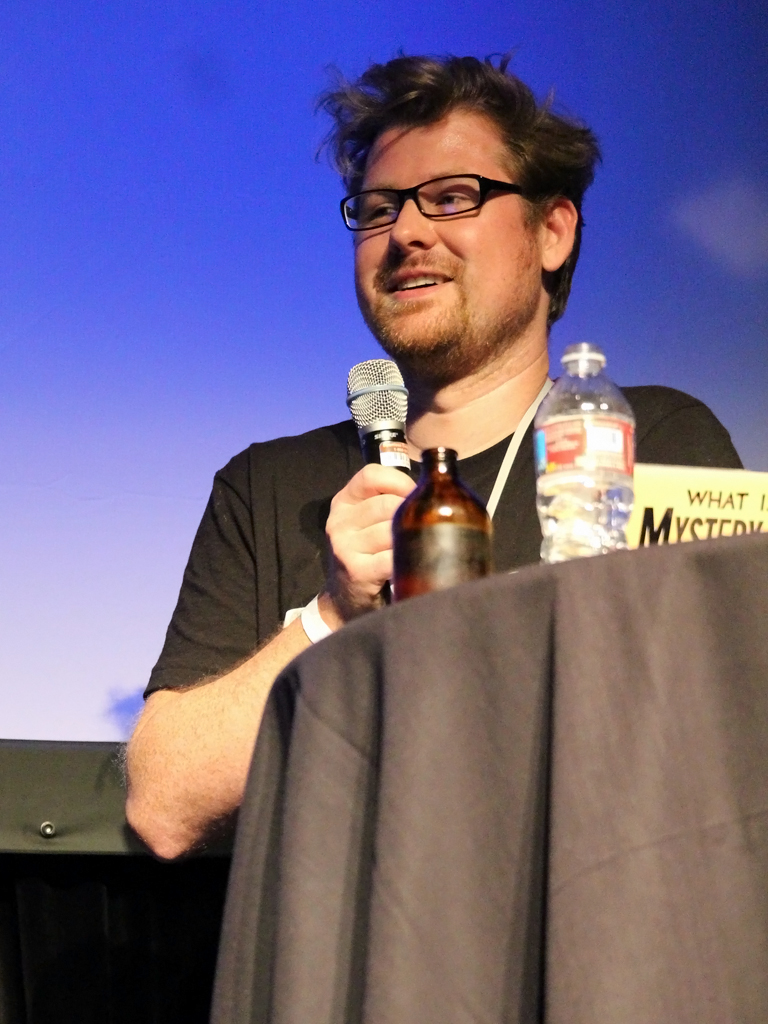
12. **Beyond the Screen: Expanding the Multiverse with Spin-offs and Films**
The boundless imagination behind “Rick and Morty” naturally sparked ambitions to extend its universe far beyond the confines of the main series. Even as early as 2019, co-creator Justin Roiland expressed a fervent desire to bring an R-rated “Rick and Morty” feature film to the big screen. This aspiration speaks to the depth of the characters and the potential for stories that require a larger canvas and a different kind of narrative scope, promising an even grander experience for fans.
The dream of a feature film gained further traction in June 2021 when producer Scott Marder confirmed that the creators and crew were actively hoping to produce such a project. Roiland himself articulated it best, suggesting it was more a question of “when,” rather than “if,” a testament to the confidence in the concept. The idea even caught the attention of acclaimed American filmmaker Zack Snyder, who publicly expressed interest in directing a “Rick and Morty” science fiction movie in 2022, further fueling anticipation among the global fanbase.
The expansion hasn’t been limited to feature film aspirations; the “Rick and Morty” multiverse has also grown through exciting spin-off series. In a significant announcement on May 20, 2021, Adult Swim revealed a short spin-off series centered on the fan-favorite Vindicators team. This 10-episode series, titled “Vindicators 2,” was released in July 2022, offering fans a deeper dive into the lives and misadventures of Supernova, Vance Maximus, Alan Rails, Crocubot, and Noob Noob, characters previously introduced in “Vindicators 3: The Return of Worldender.”
Further illustrating the show’s expanding reach, Adult Swim announced a full spin-off series, “Rick and Morty: The Anime,” on May 18, 2022, directed by the talented Takashi Sano. This exciting venture promises to bring a fresh aesthetic and narrative approach to the beloved characters. The multiverse continues to unfold with even more projects on the horizon; at San Diego Comic-Con on July 25, 2025, a spin-off series focusing on the popular character President Curtis was officially announced, proving that the creative well is far from dry.
The characters of Rick and Morty have also made memorable appearances beyond their own dedicated shows, permeating other popular media. In 2021, both Rick and Morty, voiced by Roiland, had a hilarious cameo in the film “Space Jam: A New Legacy.” They amusingly claimed to have experimented on the Tasmanian Devil, only to be disgusted by the results and voluntarily return him to LeBron James and the Looney Tunes. Their cross-dimensional mischief also extended to “The Simpsons,” featuring prominently in the couch gag of “Mathlete’s Feat,” the final episode of the twenty-sixth season. This opening saw Rick accidentally killing the family in a crash landing, prompting Morty to embark on a mission to bring them back to life, blending their signature dark humor with the iconic Springfield residents. The franchise also boasts a comic book adaptation, which debuted on April 1, 2015, featuring alternate timelines and expanding the narratives beyond the screen.
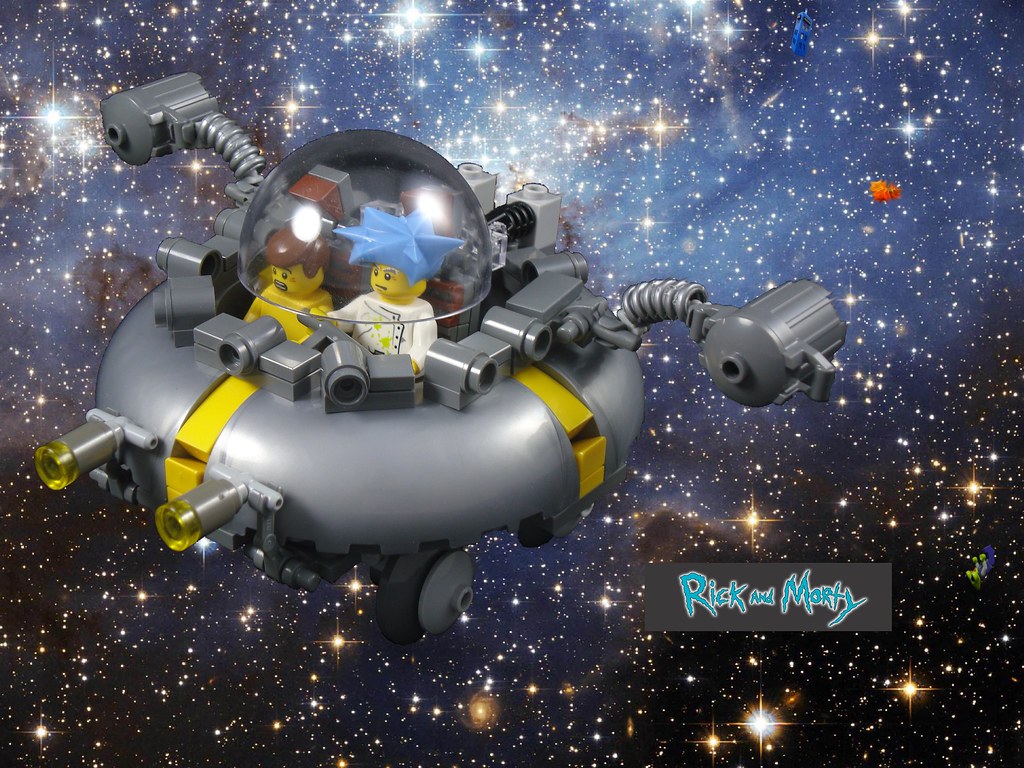
13. **Global Reach: The Show’s Broadcast and Streaming Journey**
The journey of “Rick and Morty” from a pilot project to a global phenomenon is a testament to its compelling storytelling and universal appeal. In May 2012, Adult Swim first unveiled its development slate, proudly including a “Rick and Morty” pilot from Harmon and Roiland. The series officially received its pickup in October 2012, marking it as one of the network’s inaugural primetime original shows, a clear indicator of the faith placed in its potential. The first season made its highly anticipated debut in December 2013 and concluded in April 2014, captivating audiences over eleven episodes, including the pilot, in its Monday 10:30 pm ET/PT slot.
The show’s early success paved the way for swift renewals. Just two months after its initial run, in February 2014, “Rick and Morty” was greenlit for a second season, with press releases highlighting its consistent outperformance of direct competition in its time slot. Season two then aired on Sundays at 11:30 pm ET/PT from July to October 2015, comprising ten episodes. The third season followed, premiering unexpectedly on April 1, 2017, as a playful April Fools’ Day prank, before its regular run began almost four months later.
In today’s interconnected world, accessibility is key, and “Rick and Morty” has ensured its availability across various streaming platforms. The entire series is accessible on Netflix in numerous countries, allowing international fans to dive into the multiverse at their leisure. For viewers in the United States, the first four seasons are available to stream on both Hulu and HBO Max, offering multiple avenues to catch up on the Smith family’s wild adventures. After the third season concluded, Adult Swim even offered a livestream marathon on its official website in selected regions, a clever move to deter illegal streams and encourage official viewership.
The show’s international footprint continued to grow, reaching new audiences through strategic broadcast deals. In the United Kingdom, public-service broadcaster Channel 4 successfully outbid Netflix, securing the rights to air the series starting with season 4. This represented a significant milestone, being its first pickup by an international television channel. Viewer demand was so strong that Channel 4 moved the premiere of the first episode forward to November 20 on E4, after it was initially scheduled for January 2020. Across the border in Canada, the series premiered on Adult Swim on January 10, 2016, and later in Quebec, it debuted on Télétoon’s Télétoon la nuit block on May 18, 2018.
For those who prefer physical media, “Rick and Morty” has also been diligently released for home entertainment. The 10-episode third season, for instance, was made available on DVD (a 2-disc set) and Blu-ray (a single BD-50 disc) on May 15, 2018. These releases often come packed with exciting special features, including exclusive commentary, animatics for every episode, “inside the episode” segments, explorations into the origins of Rick and Morty, and unique “inside the recording booth” sessions. Uncensored versions of the show, along with bonus material, are also readily available for purchase on various digital platforms, including iTunes and Amazon, ensuring fans can enjoy the series in all its unedited glory.
“Rick and Morty” has undeniably carved out an indelible mark in the annals of television history. From its humble beginnings as a crude parody short to a multi-million-dollar franchise, its journey has been as complex and unpredictable as a trip through the multiverse itself. It stands as a vibrant testament to the power of unbridled creativity, daring humor, and surprisingly profound philosophical depth, captivating hearts and minds with its unique blend of domestic drama and cosmic chaos. As the series continues to evolve, pushing boundaries and expanding its reach, one thing remains clear: the adventures of Rick Sanchez and Morty Smith are far from over, promising many more years of laughter, introspection, and interdimensional escapades for its devoted global audience.

